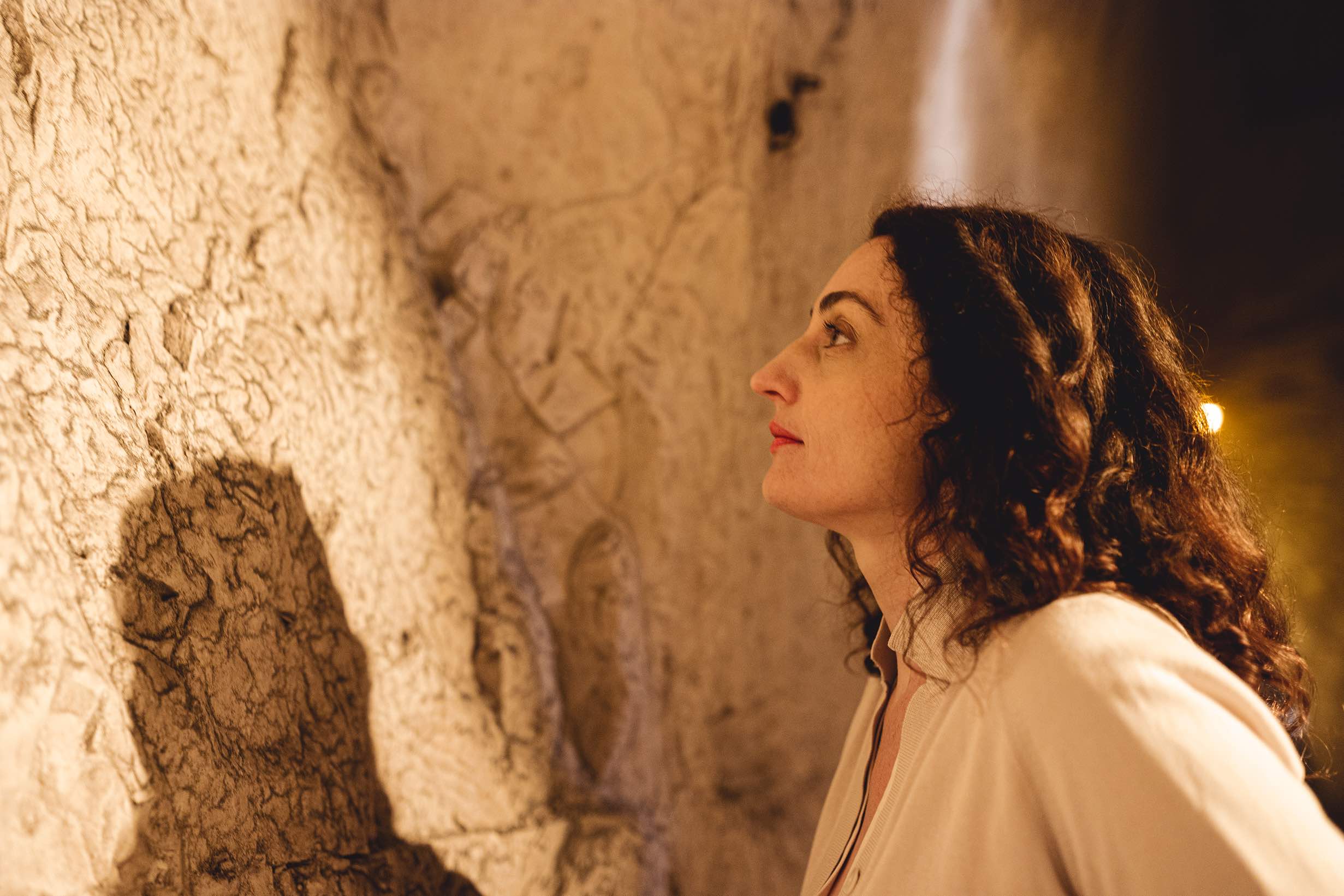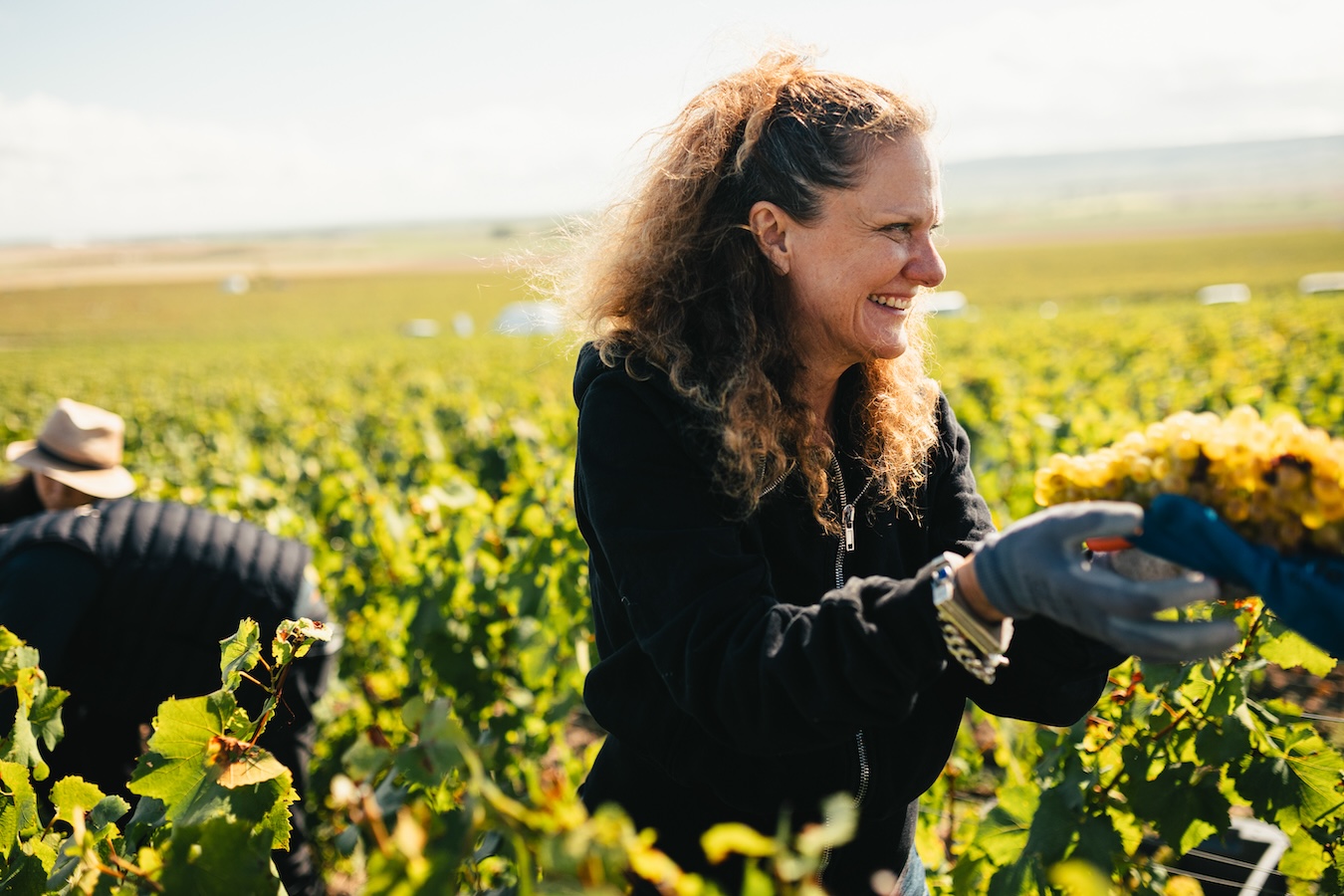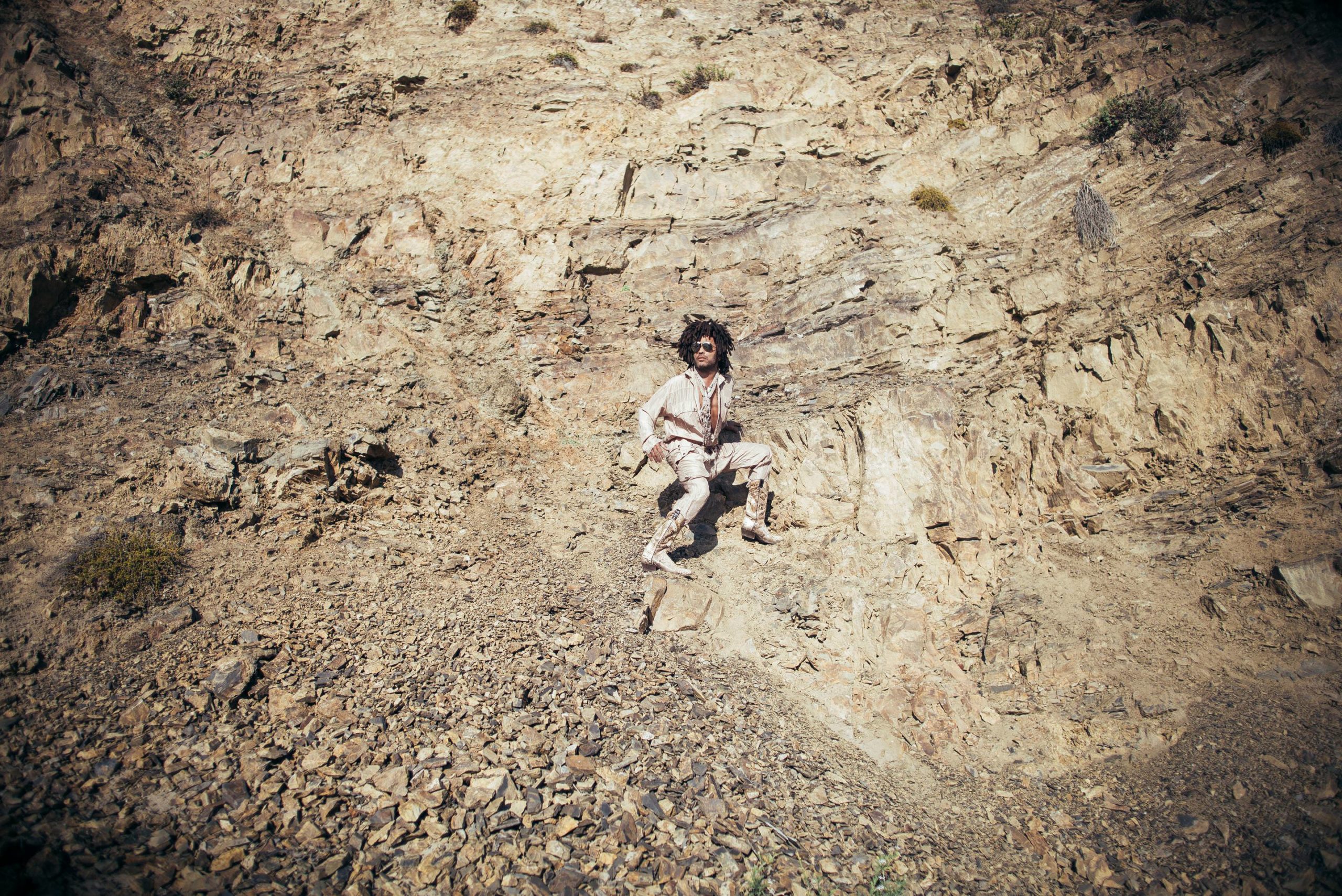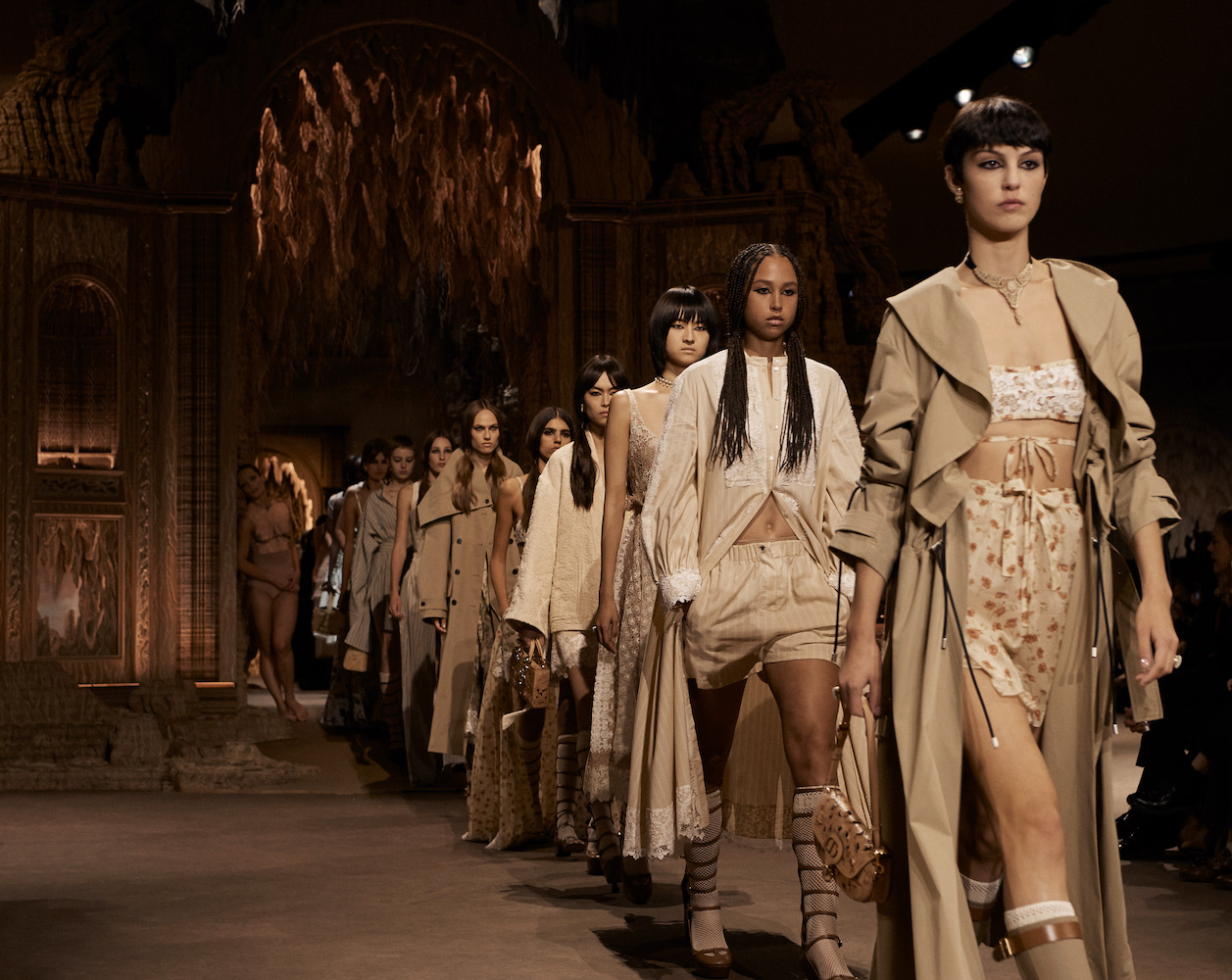As minutiae coalesce into myriad sculptural landscapes saturated in detail and complicated depths, Ruinart’s much-coveted annual artist commission of this year invites audiences to lose themselves in layers, ambling through an elaborate garden of chiseled cardboard and embroidered reliefs that make up artist Eva Jospin’s “Promenade.”
This year’s artist-in-residence, Jospin is well-known for her meticulous, monumental sculptures of colossal cardboard forests and ornate grottoes that transport viewers within museums—like the Louvre (“Panorama,” 2015) —and fashion shows—like Dior’s runway (Haute Couture Spring/Summer 2023),
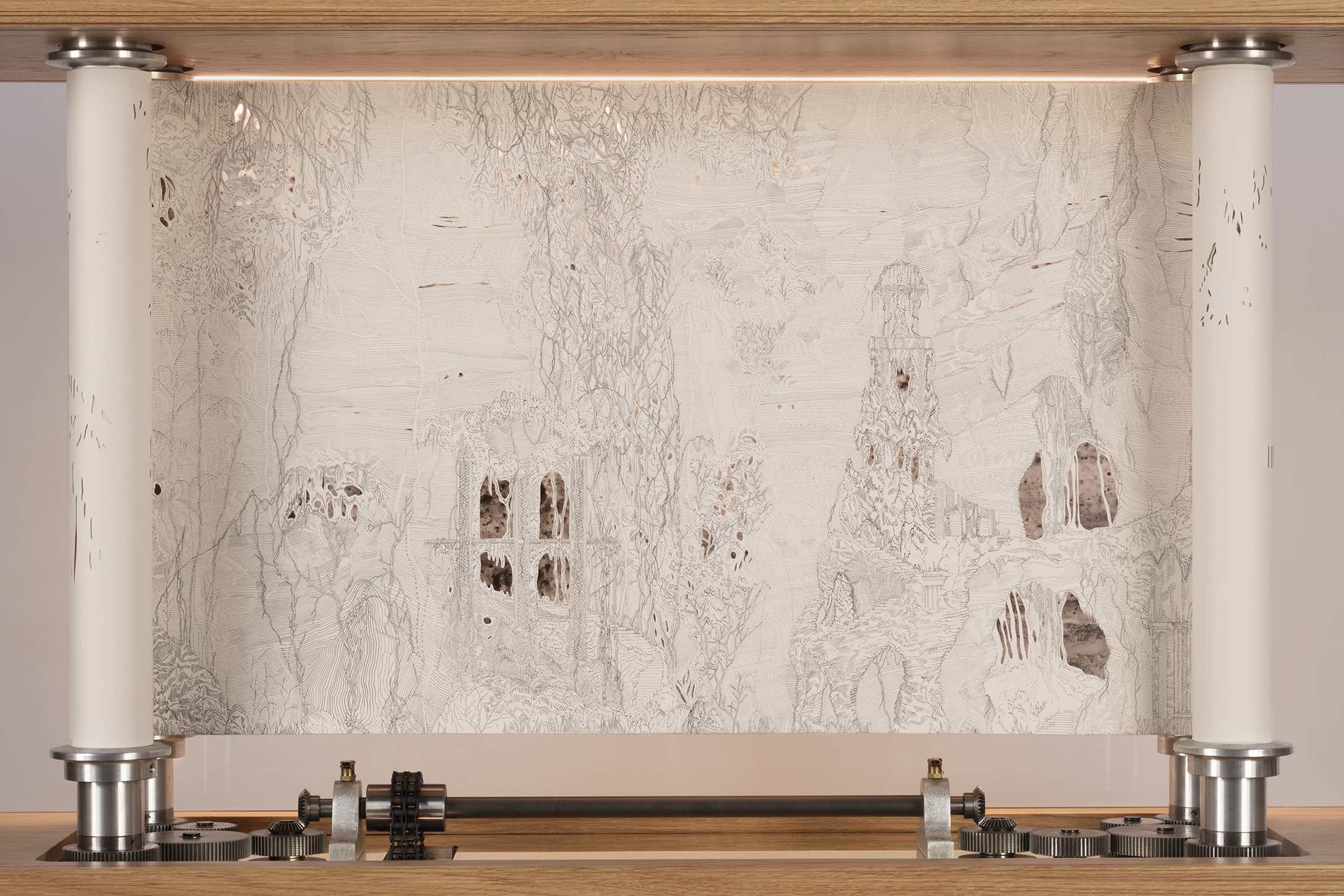
Eva Jospin for Ruinart.
The artist’s latest installation “Promenade” brings a dose of bucolic fantasy and mystery to the Ruinart Carte Blanche commission—previously involving names like David Shrigley, Jeppe Hein, Vik Muniz, and Liu Bolin—marks the first time the house has ever named a woman as its Carte Blanche artist.
First exhibited in March at the Carreau du Temple in Paris, “Promenade” is inspired by the cross-sectional landscape of the Champagne region, allowing Jospin to delve further into her ongoing obsession, meandering in forests, architectures, and gardens as they “open one door after another in an infinite spectrum of inspirations,” she told Whitewall.
Over tea, as we probed her about her practice, Jospin discussed the different elements that weave through her constructed landscape. Unfurling like an arcadian universe, her installation unfolds what she describes “a promenade among the different layers of time,” and “the different layers of the landscape, from the caves and the rocks to the vineyards and the forest.”
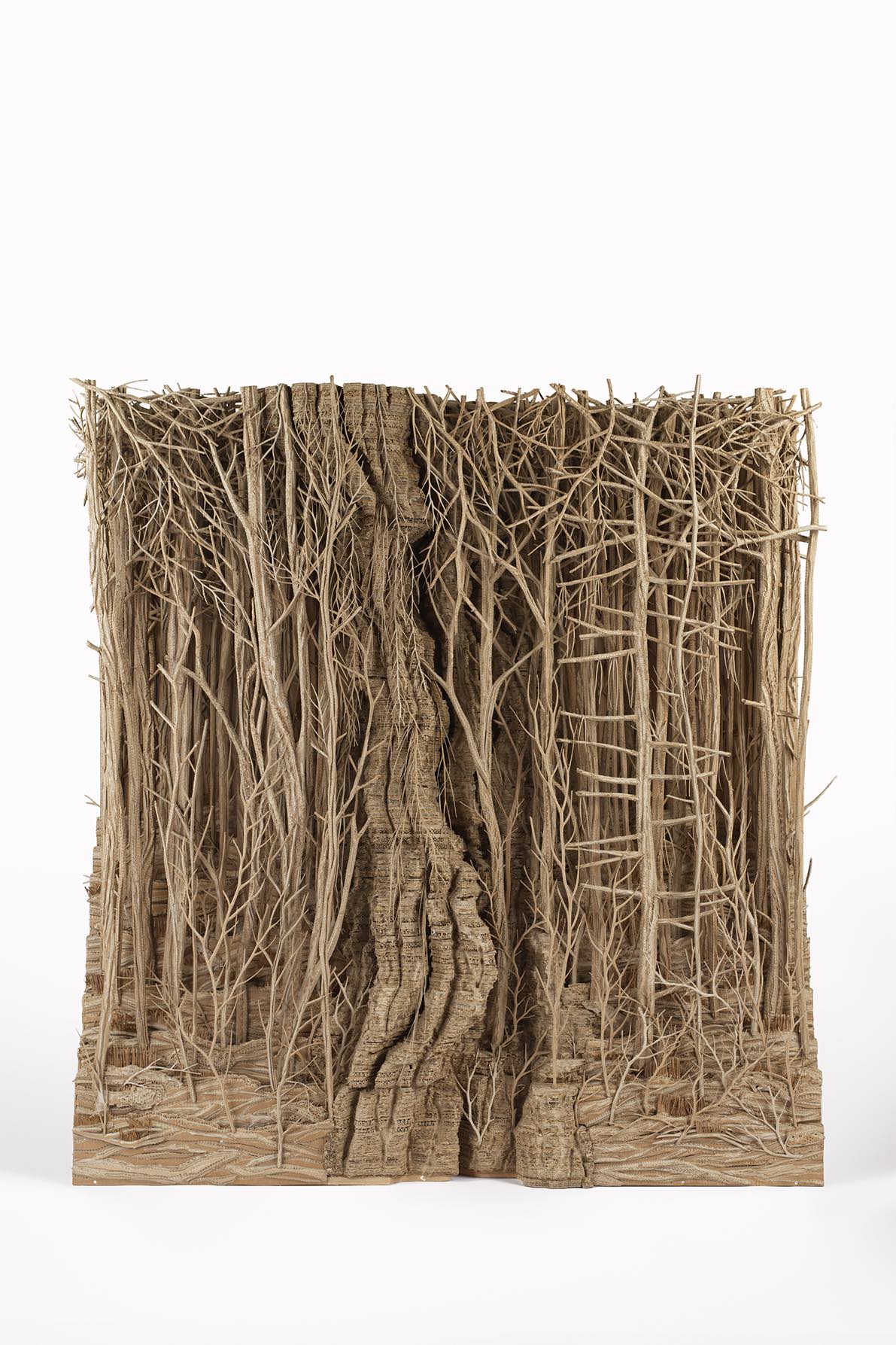
Eva Jospin for Ruinart.
Taking the audience through a stroll rooted in the region’s rich topography and history, the works pay special attention to the woodlands bordering Ruinart’s Taissy Vineyard, where 25,000 trees have been planted as part of the champagne house’s expanded commitment to supporting biodiversity.
In the main hall of the exhibition space, a gothic arch sat in the center, “like the beating heart of the exhibition,” “branches branching off from there,” spreading out like “a full universe inspired by the layers of history and landscape of the Champagne region,” said Jospin.
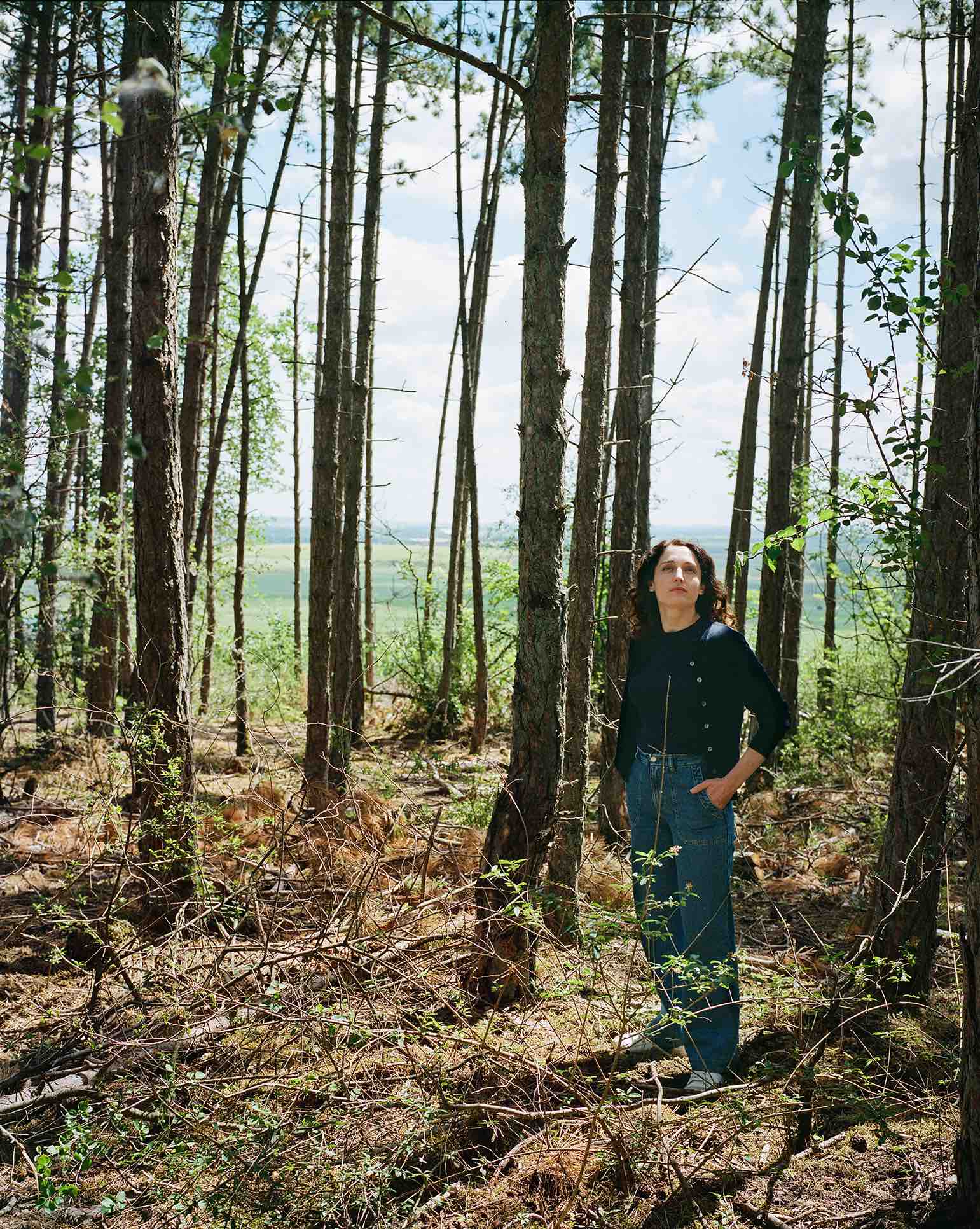
Eva Jospin, photo by Laura Vasconi, courtesy of Ruinart.
By use of the scalpel, pencil, or needle, Jospin’s fine lines disperse wild, sprawling foliage interspersed with baroque architectural ruins over a medley of mediums, “depicting a world in layers,” merging both topographies of architectural and natural structures while fostering dialogues between them.
Crossing materials, mediums, and scales, embodying nature’s grandness as well as its minuteness of detail, the installation comprised different elements: miniature landscapes (petits chef d’oeuvres), cardboard forest bas-reliefs, drawings, embroidery, three-dimensional feedback loops, and even an invention from the 1700s called the Carmontelle, which nodded to the century from which the Maison first derived its name.

Eva Jospin for Ruinart.
Akin to what Jospin terms a “dense and detailed set décor,” the dispersion of works gave figurative renderings to the different elements discovered during her visit to Maison Ruinart, unfolding a multi-spectral journey through time, where renewed cycles of flora and history intertwine, creating “an artificial world through art” that in Jospin’s view serves to elucidate the real one.
Tracing elements from the chalky underground world of the hallowed crayères to the intertwining roots of the vines, and the baroque architecture of the neighboring Cathedrale Notre Dame de Reims for us to forage through, each comes to the surface in the frieze on paper, Carmontelle, that sits at the forefront of the show. Stretched between two spools, the roll-on-paper articulates a graphic narrative of pastoral scenes that recounts, in filigree, the “invisible threads between the vines, the roots and the underground chalk cellars” that Eva discerns.
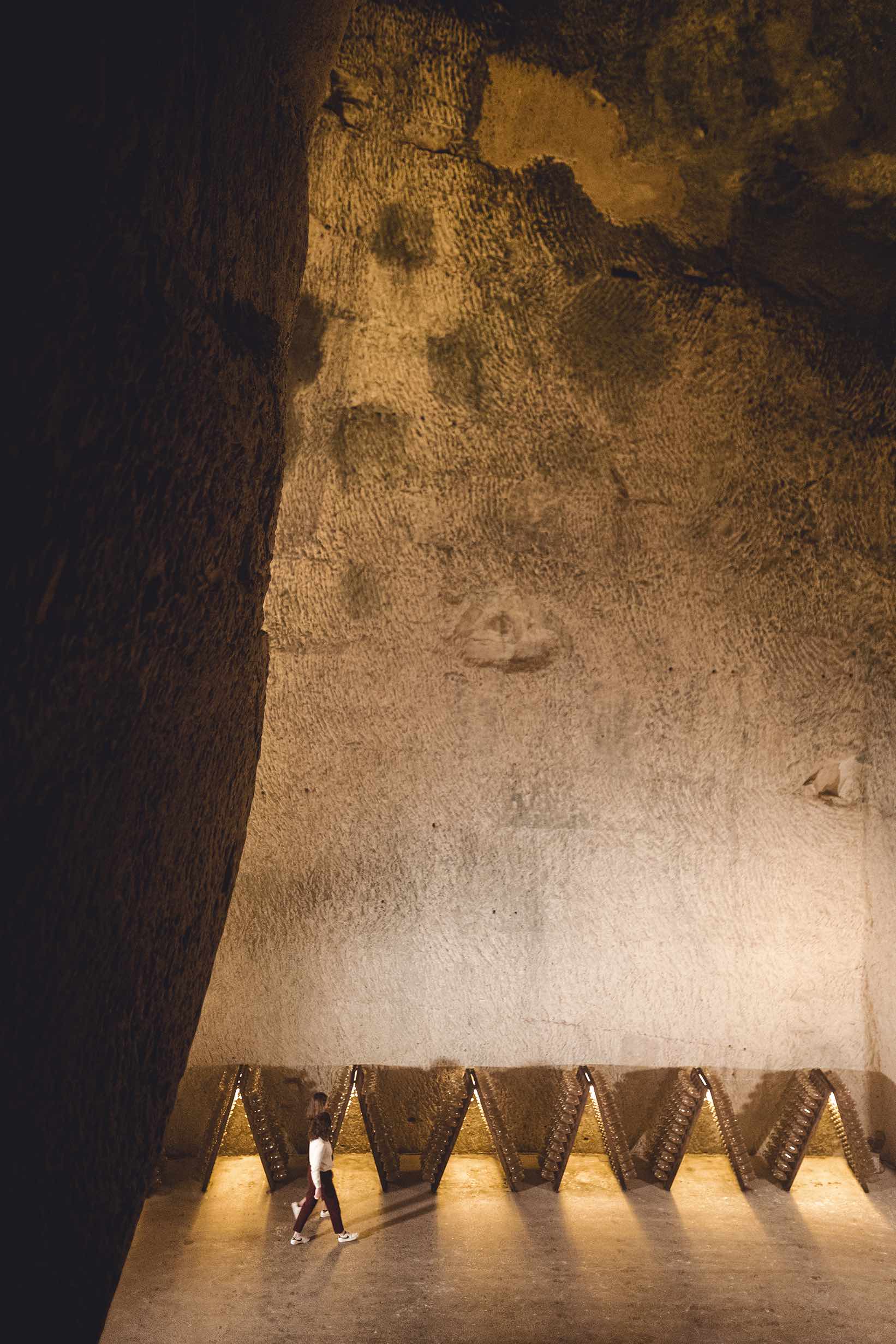
Eva Jospin in Ruinart’s crayeres, photo by Mathieu Bonnevie, courtesy of Ruinart.
Recurrent throughout her forestry of works, the artist’s use of entrelac patterns and stratified lines emphasize the interconnectedness of each increment in the making of Ruinart champagne, handled with the mastery and artisanal know-how passed down through generations.
Paying tribute to the patient, precise, and highly technical gestures of the riddling and pruning of the vines, Jospin draws parallels between the skilled manual handiwork of the winemaker and her own practice, allowing for “a metamorphosis…as something simple like grapes becomes a bottle of Ruinart through a long process of transformation.”
Renowned for her masterful transformation of corrugated cardboard into the most elaborate and amorphous Renaissance-like grottoes, Eva is no stranger to the power of manual labor. Just as the cellar master extracts and gives life to the aromas of the grape through an alchemy of fermentation, Eva’s intricate stages of shaving, sanding, and etching, elevate the cardboard, cultivating its depths and perspectives as it turns a simple material into a work of art truly worthy of its recognition.
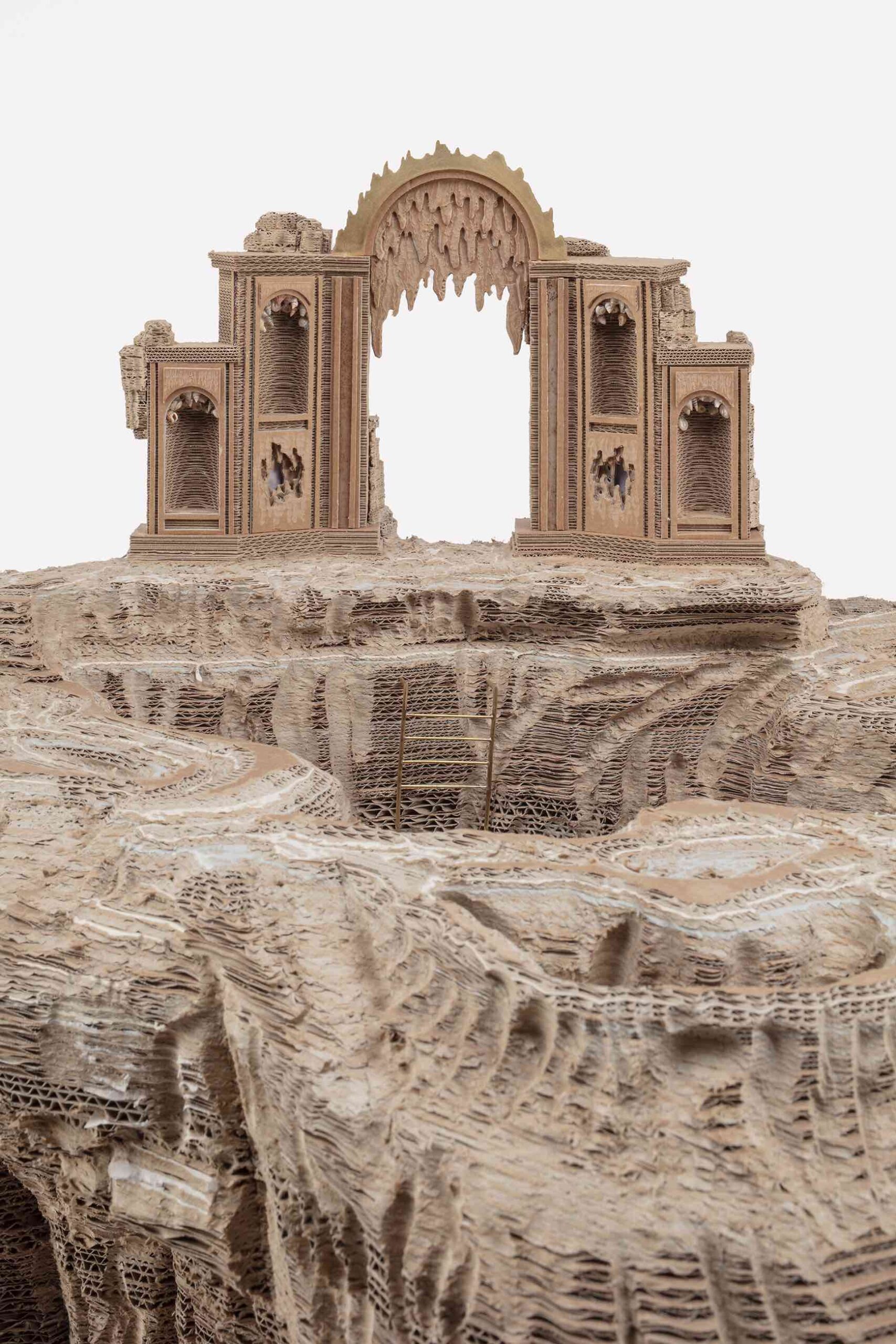
Eva Jospin for Ruinart.
First a student of architecture, it was in fact the physicality of making objects by hand that first drew Jospin’s attention to sculpture. Finding herself absorbed in the physicality of the repeated gestures, Jospin would lose herself in the process, the intelligence of the hand guiding her through her practice.
For the audience, the process of discovery seems to fall under the same precept: whereby time is “more circular, like a blend in a way,” elusive in its historical depiction as much as in its felt experience, “inviting us to meditate, to dream, and to take the time, salutary, of contemplation,” she said.
After its launch in Paris, Eva Jospin x Ruinart 2023 Carte Blanche traveled to Art Basel Hong Kong, MiArt Milano, Art Brussels, and Berlin Gallery Weekend. This week in New York, Ruinart invites visitors to discover Jospin’s “Promenade” during TEFAF New York (May 12—16) and Frieze New York (May 17—21) within Ruinart’s lounges. Jospin’s work will also be on view at Maison 1729 NYC, an immersive Ruinart pop-up space at 500 West 22nd Street, open to the public May 19—June 9.
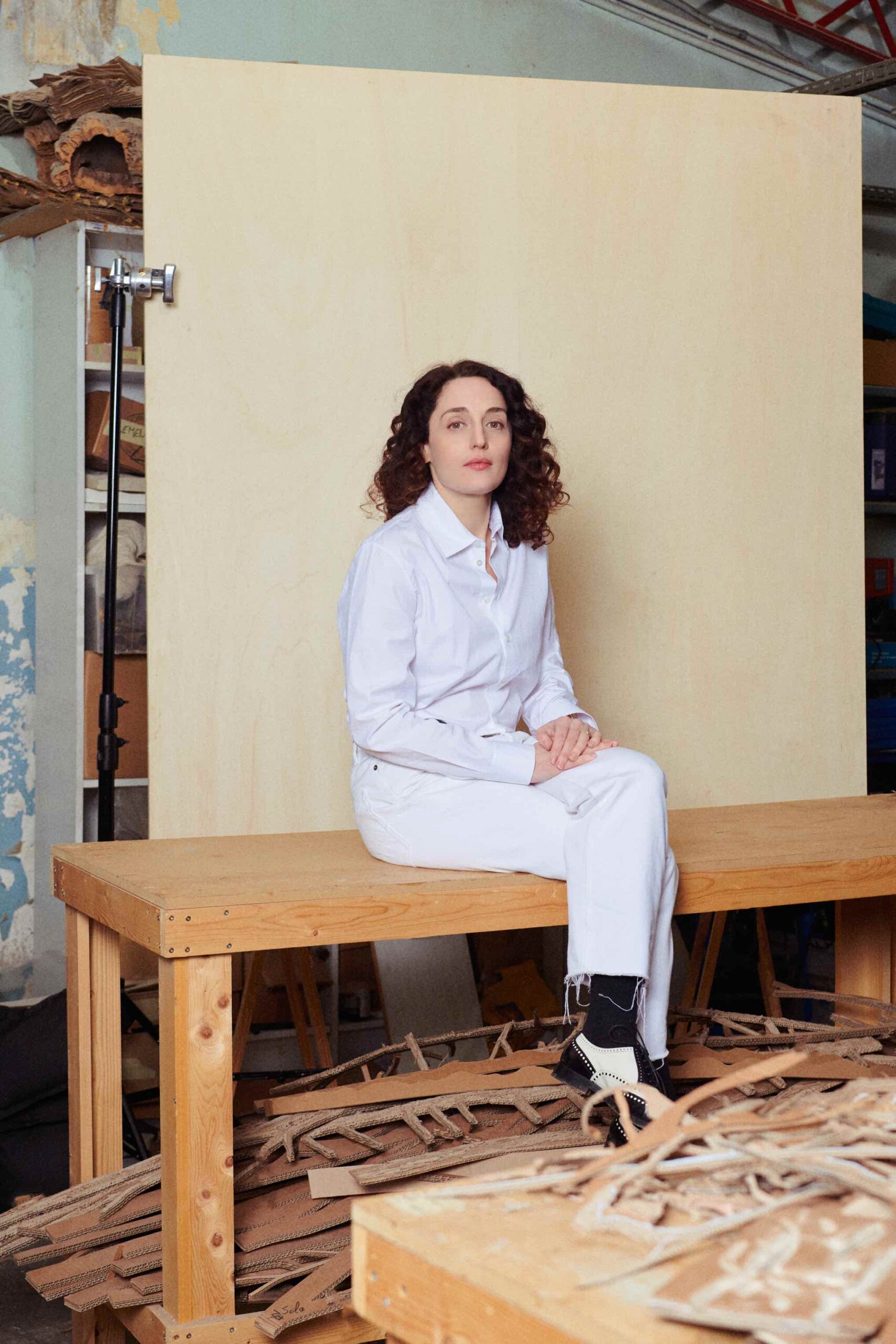
Eva Jospin, portrait by Flavien Prioreau, courtesy of Ruinart.



